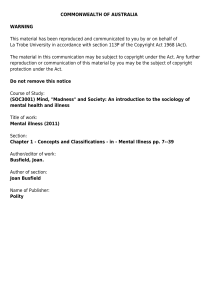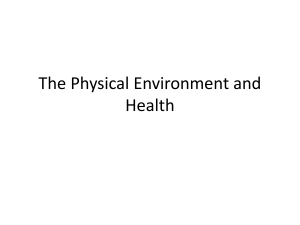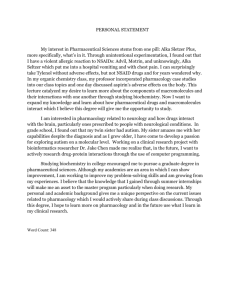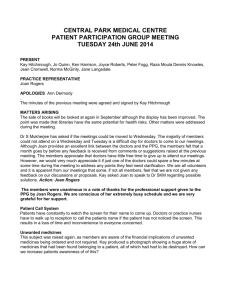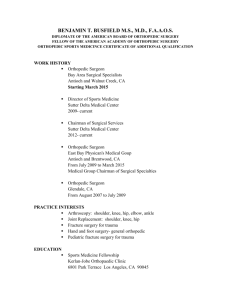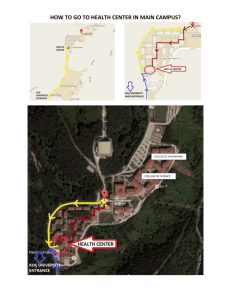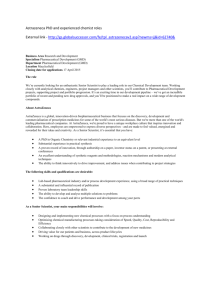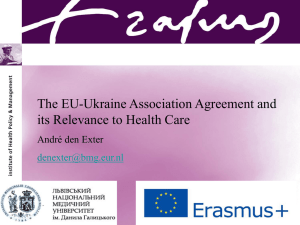Part One Source Two
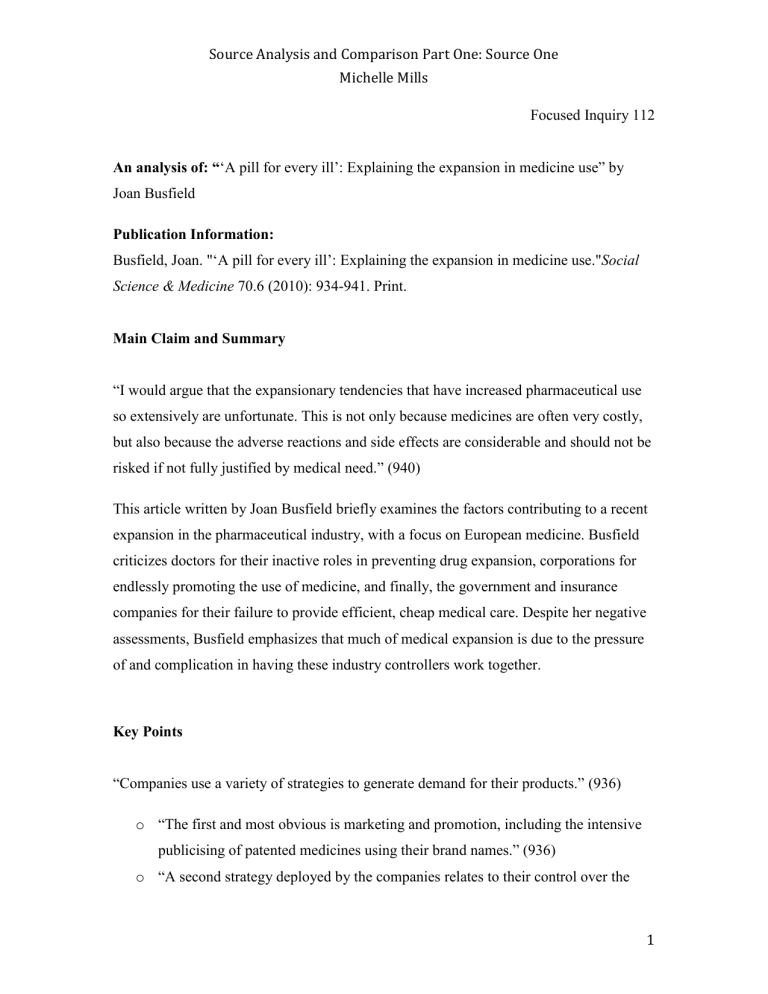
Source Analysis and Comparison Part One: Source One
Michelle Mills
Focused Inquiry 112
An analysis of: “ ‘A pill for every ill’: Explaining the expansion in medicine use” by
Joan Busfield
Publication Information:
Busfield, Joan. "‘A pill for every ill’: Explaining the expansion in medicine use."
Social
Science & Medicine 70.6 (2010): 934-941. Print.
Main Claim and Summary
“I would argue that the expansionary tendencies that have increased pharmaceutical use so extensively are unfortunate. This is not only because medicines are often very costly, but also because the adverse reactions and side effects are considerable and should not be risked if not fully justified by medical need.” (940)
This article written by Joan Busfield briefly examines the factors contributing to a recent expansion in the pharmaceutical industry, with a focus on European medicine. Busfield criticizes doctors for their inactive roles in preventing drug expansion, corporations for endlessly promoting the use of medicine, and finally, the government and insurance companies for their failure to provide efficient, cheap medical care. Despite her negative assessments, Busfield emphasizes that much of medical expansion is due to the pressure of and complication in having these industry controllers work together.
Key Points
“Companies use a variety of strategies to generate demand for their products.” (936) o “The first and most obvious is marketing and promotion, including the intensive publicising of patented medicines using their brand names.” (936) o “A second strategy deployed by the companies relates to their control over the
1
Source Analysis and Comparison Part One: Source One
Michelle Mills science that underpins the development and testing of new medicines to determine that a drug is safe and effective – assessments necessary if a drug is to be licensed.” (936) o “The third strategy to encourage medicine use is to construct new medical conditions or extend the boundaries of existing ones considered to require pharmaceutical treatment, which the industry heavily promotes.” (936)
“I argue that four features of medical knowledge and practice encourage prescribing and help to ensure that doctors play a relatively minor role in challenging the expansionary pressures of the industry. The first three relate to doctors’ clinical work: their interventionism, the imbalances in their risk assessments, and their limited knowledge of drug technologies.” (937) o “A prescription symbolises that the doctor has something to offer and can help the patient, even if it is unlikely to make a real difference to their condition ( Butler,
Rollnick, Pill, Maggs-Rapport, & Stott, 1998 ); it also provides a relatively speedy way of ending the medical encounter. This interventionism is not new; however, as more medicines come onto the market and doctors also face the industry’s intensive promotional activities, the opportunities for ‘doing something’ are extended with expansionary implications for medicine use beyond the meeting of health needs.” (937) o “The second feature of medical work that prevents tight gate- keeping relates to risk assessment in the face of uncertainty in clinical practice. In a classic paper
Scheff (1963) argued that doctors have to weigh up two types of error when uncertain whether a patient is ill. The risk of treating a person who is not ill with a treatment they do not need, and the risk of not treating a person who is actually ill, who could become worse if not treated.” (937) o “A third feature that prevents tight gate-keeping is that doctors’ knowledge of pharmacology is often limited, though hospital specialists may acquire a reasonable knowledge of drugs used in their field. During medical training the amount of specific teaching in pharmacology is limited – an English survey
2
Source Analysis and Comparison Part One: Source One
Michelle Mills showed a total of only 61 hours teaching in pharmacology, clinical pharmacology and therapeutics ( Aronson, Henderson, Webb, & Rawlins, 2006 ). And many admit they do not have the technical expertise to evaluate reports on the efficacy and effects of drugs.” (938)
“The government is also a key influence on the character of a country’s health services through its policies on the extent of the public and private health sectors and its decisions as to welfare arrangements, including how health services are structured and funded.”
(939) o “Both governments and insurance companies have a direct interest in the price of medicines in order to control expenditure, and as medical costs have escalated, the pressures to control pharmaceutical costs have increased.” (939) o “Funders, whether governments or insurance companies, also have an interest in the level of medical prescribing in order to contain costs. In the NHS, GP practice prescribing levels are now monitored by primary health care trusts and there are efforts to control high prescribers,” (939) o “However, although governments and insurance companies have a strong interest in product and price regulation, they can also have a strong interest in supporting the industry, either to secure more favourable prices or, if companies are located within the country, because they provide a valuable contribution to the economy.”
(939)
Biography and Credibility
Joan Busfield is a British psychologist and sociologist, with a focus on psychiatry and mental illness. Early in her career, Busfield trained as a clinical psychologist at the
Tuvistock Clinic before earning her MA from Saint Andrews. She received her MA and
PhD from University of Essex, where she is now a professor of sociology. Dr. Busfield was also president of President of the British Sociological Associatio n for two years.
3
Source Analysis and Comparison Part One: Source One
Michelle Mills
(
"Department of Sociology." University of Essex. N.p., n.d. Web. 26 Oct. 2014.
<http://www.essex.ac.uk/sociology/staff/profile.aspx?ID=123>.
)
To find this article, I used the VCU library search engine, with the search
“pharmaceutical industry consumerism.”
4
